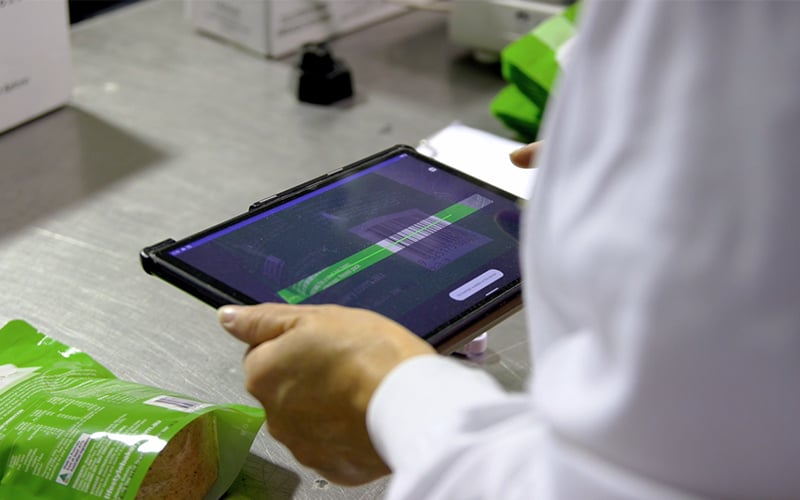
Preparing For Tomorrow’s Workforce: The Role of AI in Human-Centric Manufacturing
The adoption of artificial intelligence (AI) has increased more quickly within manufacturing than in sectors such as construction or transport, and usage is expanding from shadow AI to accepted mainstream in our industry - but only for some.
2025 will see a rapid shift from fringe usage to tangible sustaining adoption in proven areas of value with a proliferation of vendors leveraging the latest models and management acceptance of AI usage in day-to-day operations. In the evolution to smarter manufacturing, filtering the hype and promise of AI against a deeper understanding of AI-readiness and operational maturity is critical. As an example of typical manufacturing maturity levels, it is still the norm for people to make critical decisions in the absence of intelligent guidance from an algorithm.
Smart manufacturing as TilliT defines it, is much more than just preparing for AI. It requires an holistic approach that integrates various technologies and strategies to enhance efficiency, productivity, and human engagement. In this piece, we look the balance of AI enabled innovation against a potentially greater return on investment by focusing, at least in the short term, on people and processes first.
The reality of AI in current manufacturing operations
As we’ve written about previously, many factories are still paper-based for data management – resulting in difficulties for information to be used in a way that drives insights and improvements in a timely manner. 75% of manufacturing equipment globally remains disconnected to any form of real-time unified management system or analytics platform. This ‘dark’ infrastructure highlights a key gap between the current reality and the future vision of AI-ready smart manufacturing.
So, acknowledging these three things - connectivity is lacking, manual information recording is prolific and human decision making is typical, the primary challenge, particularly for SMEs is bridging the gap between their current state and the advanced, AI-driven future. The true shorter-term potential of AI lies in its integration with other technologies and processes to create a cohesive and efficient manufacturing environment. However, baseline digital infrastructure and integrated paperless systems are a critical precursor.
While 2025 may be a breakout year, the journey to systemic AI adoption is expected to take over a decade or more, requiring a considered approach to transformation based on maturity level. ChatGPT, Deep Seek and the weekly release cycle of new models will accelerate. The part of the equation frequently forgotten and at risk of disappearing is where people fit into that approach.
Human efficiency as part of the puzzle
Smart manufacturing is about enhancing human and overall process efficiency. People are a critical resource for the foreseeable future on the shop floor in most manufacturing industries. By digitalizing tasks, going paperless, and embedding tribal knowledge in process driven tools, manufacturers can synchronize machinery, material and people to achieve optimal efficiency. This approach ensures that human workers are supported by technology, enabled by data, augmenting their daily tasks and building rich information about operations as a whole – which AI can then be applied to. Human augmentation versus complete automation is key right now, with an important focus on how manufacturers can prepare for the next generation to enter the workforce by creating and AI-ready operating philosophy.
According to Citrix, by 2035, many organizations will be run by digital natives: millennials and Gen Z’s that have grown up either adapting alongside the technological boom or being born in the midst of it.
This new generation, accustomed to the convenience and efficiency of tools such as Chat GPT in their daily lives, are likely to find traditional manufacturing environments less appealing.
They are seeking workplaces where advanced technologies streamline operations, enhance productivity, and foster innovation. They will expect the basics of digital operations to be in place as a critical enabler of how they work. Without the correct infrastructure, systems and targeted adoption of AI into processes, manufacturing jobs will continue to be seen as outdated and less attractive, making it harder to draw in fresh talent.
The next generation expects AI to be a fundamental part of their workday. That means manufacturers need to adopt strategies that align with both the expectations of what is possible today and the values of digital natives, so they can attract and retain young talent tomorrow.
It will be essential to create a technologically advanced and engaging work environment. This will mean:
- Embracing advanced technology: Utilizing latest generation digital strategies, installing IoT devices connected to unified digital platforms for managing operations – machines, people and processes.
- Upskilling your workforce: Providing training and development opportunities to ensure your teams can effectively use these new technologies. BCG reports that only 14% of frontline employees say they have gone through any upskilling in AI, compared with 44% of leaders.
- Fostering career pathways in your organization: Offer clear career progression and development opportunities to retain and motivate young workers.
Human-centric digital manufacturing supports the current state of manufacturing and represents a transformative approach that embraces advanced technologies while placing a strong emphasis on the wellbeing and development of workers.
By establishing a digital baseline before integrating AI and other smart technologies, this model enhances human efficiency and fosters a more engaging work environment, making it particularly desirable for digital natives.
As manufacturers prioritize the skills and needs of their workforce, they create a sustainable and productive atmosphere that resonates with the values of the next generation. This focus on collaboration and innovation is essential for attracting young talent, ensuring that the manufacturing industry remains vibrant and competitive in the future.
Enjoyed this post? Don't forget to share!


